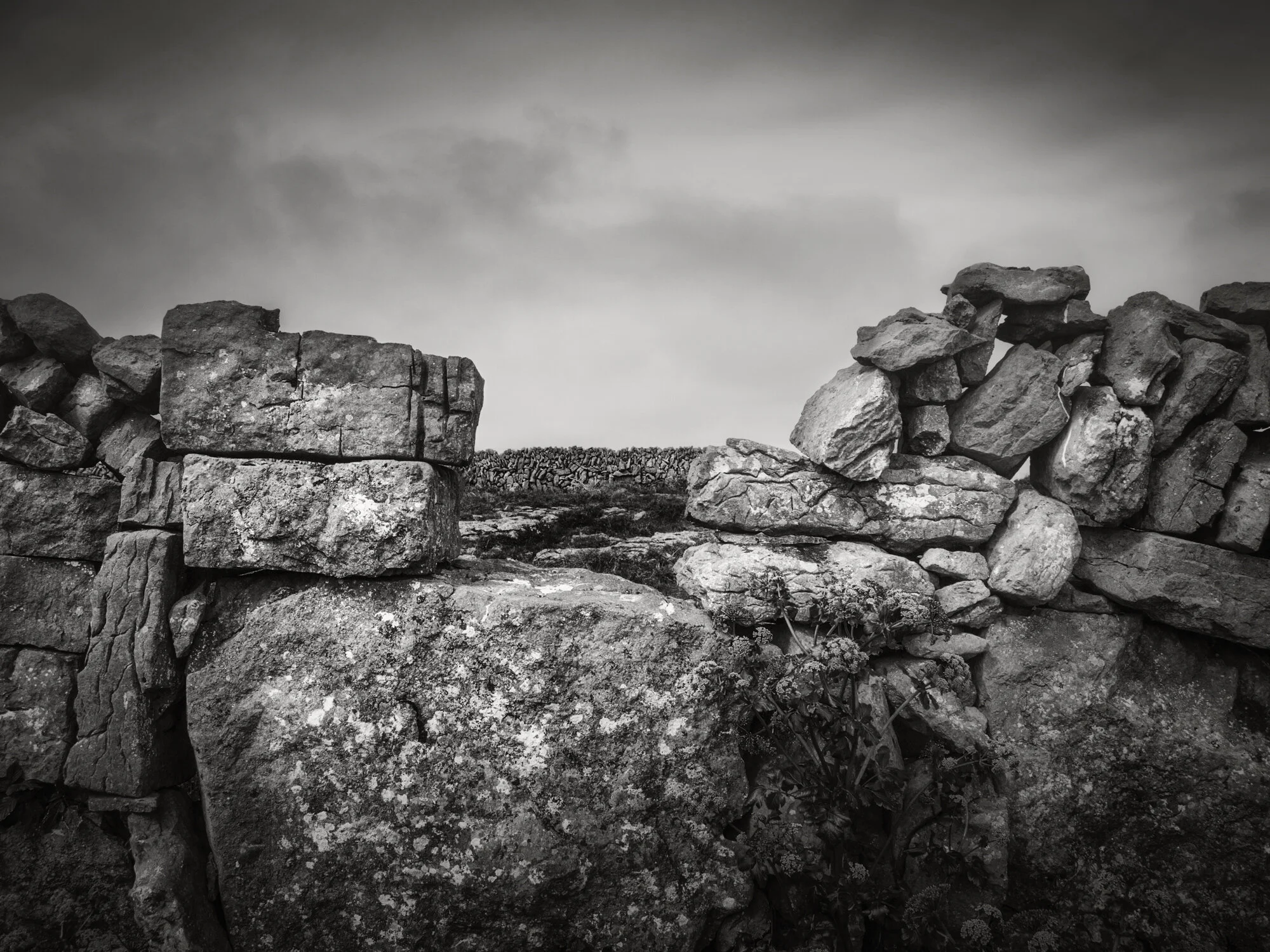Aran Walls
On my first trip to the Aran Islands, I was struck by the dense, gray landscape of rock. The slabs of limestone under my feet receded into crowded rows of stone walls, retreating into the distance. Slowly details began to emerge: clusters of houses nestled into the maze of walls; small, green fields delineated by the walls; ancient structures rising above the walls; and eventually the unique arrangement of stones that comprised each wall. I was awestruck, and then obsessed.
The walls spoke to me of time. Ancient, Bronze-age stone forts revealed the early craft of building dry-laid stone walls. Successive generations of islanders continued the craft of arranging stones to create the walls that eventually covered most of the island. This cycle, spanning generations, looks back to the original craftsmen of long ago, and forward to the future generations who will continue to maintain and build stone walls.
The walls also spoke of the fragile relationship between man and nature, documenting the presence and perseverance of those who made their homes on the island. In a challenging environment, the islanders developed methods to create and maintain land capable of producing food. To create arable land, it was necessary to clear stones from the terrain and to augment the thin layer of soil with seaweed and sand. The cleared stones were used to construct walls that protected these fragile fields from wind and storm. Using the stuff of the landscape, man imposed his imprint upon the landscape.
The walls intrigued me with their balance between part and whole, a pattern that manifested itself throughout the island. In a grand sense, the island itself was a single stone that was segmented into the interlocking parts of the parcels of land defined by the walls. The limestone pavement that comprised the surface of the island was divided into an arrangement of individual blocks (clints) defined by the deep vertical fissures (grikes) that ran across the island. And finally, the walls themselves were composed of a multitude of stones, each stone an integral part of the wall into which it was placed.
Once home, working on my images from the Aran Islands, I found that the ones from Inishmaan, the middle island, especially resonated with me. I felt that I had to return and spend more time exploring Inishmaan on my own; walking the old, narrow lanes and pathways, closely observing the walls, reflecting on how the island, the fields, the walls, and the people are all interconnected. In making these images, I’ve tried to convey what my mind’s eye saw and what I felt when taking the pictures.















